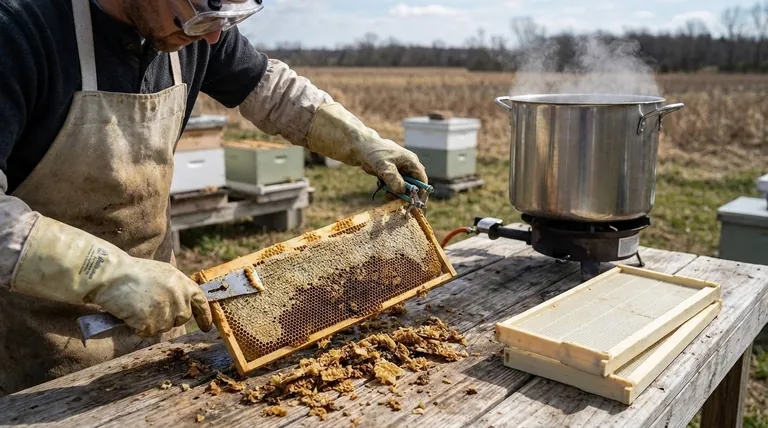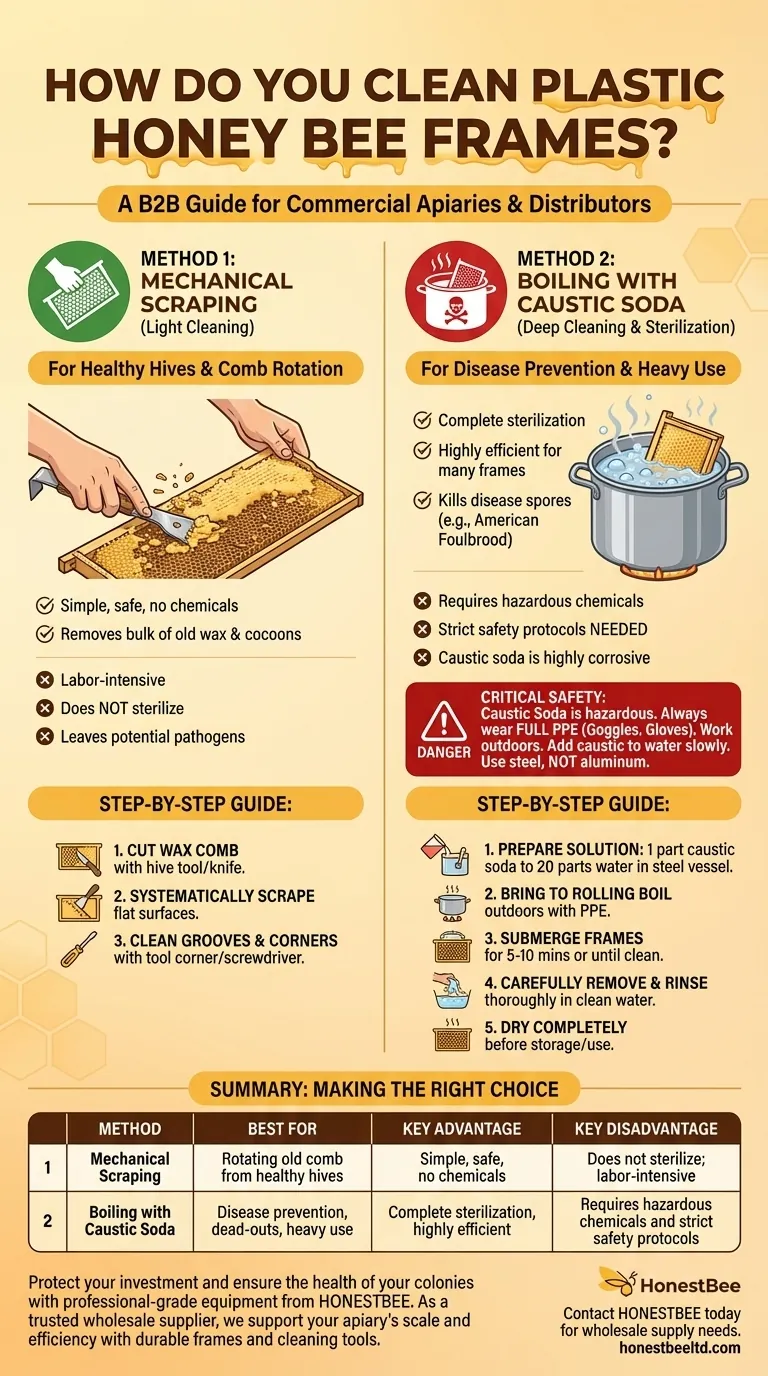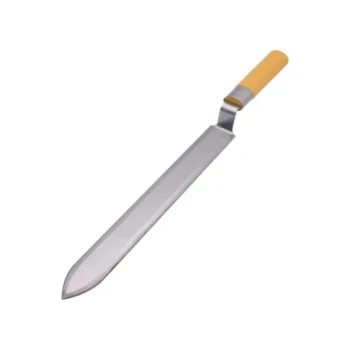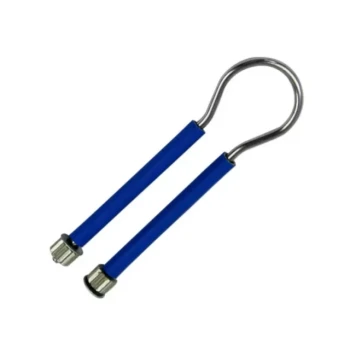To clean plastic honey bee frames, you have two primary methods depending on your goal. For simple removal of old wax and light propolis, you can mechanically scrape the frames with a hive tool. For deep cleaning and sterilization to remove all wax and propolis while killing disease spores, you must boil the frames in a solution of caustic soda (sodium hydroxide).
The core decision is not just about cleaning, but about sanitation. Simple scraping is fast for healthy hives, but boiling is the only reliable way to sterilize frames and prevent the spread of serious diseases like American Foulbrood.

The Two Primary Cleaning Methods Explained
Your approach to cleaning should be determined by the state of the frames and your apiary's health history.
Method 1: Mechanical Scraping (Light Cleaning)
This is the most straightforward method, requiring only simple hand tools. It is suitable when you are rotating out old comb from a healthy hive and want to allow the bees to draw fresh comb.
Scraping effectively removes the bulk of old beeswax, cocoons, and light propolis buildup. A sturdy hive tool or a dedicated frame scraper is all that is required for the job.
Method 2: Boiling with Caustic Soda (Deep Cleaning & Sterilization)
This method is the industry standard for large-scale cleaning and, more importantly, for sanitization. It uses a chemical reaction to dissolve all organic material.
The process involves submerging the frames in a boiling solution of water and caustic soda (sodium hydroxide). This completely dissolves all wax and propolis, leaving the plastic bare. This is the preferred method when dealing with frames from a dead-out, a hive with disease, or when you want to ensure a completely sterile foundation for the next season.
Understanding the Trade-offs & Critical Safety
Each method has distinct advantages and disadvantages that you must weigh carefully.
Scraping: Simple but Incomplete
The primary benefit of scraping is its simplicity and safety. You don't need special equipment or hazardous chemicals.
However, it is labor-intensive and does not sterilize the frame. It leaves behind propolis residue and potential pathogens hidden in the cell bases, which could transfer disease between colonies.
Boiling: Efficient but Hazardous
Boiling is exceptionally efficient, capable of cleaning dozens of frames in a short amount of time. It is unmatched in its ability to sterilize equipment.
The significant trade-off is the danger of working with caustic soda. It is a highly corrosive chemical that can cause severe chemical burns to skin and eyes upon contact. This process must be taken extremely seriously.
Safety is Non-Negotiable with Caustic Soda
If you choose to boil frames, you must use appropriate Personal Protective Equipment (PPE).
- Wear chemical-resistant splash goggles and gloves at all times.
- Work outdoors in a well-ventilated area to avoid inhaling fumes.
- Use a large, stable steel pot or trough dedicated to this purpose; do not use aluminum, as it will react with the caustic soda.
- Always add the caustic soda slowly to the water, never the other way around, to prevent a violent reaction.
A Step-by-Step Guide to Cleaning
Follow these steps for a consistent and effective cleaning process.
If Scraping Mechanically:
- Use a sharp hive tool or a putty knife to cut the wax comb away from the plastic foundation.
- Systematically scrape the flat surfaces of the frame to remove the remaining wax and propolis.
- Use the corner of your hive tool or a small screwdriver to clean out any stubborn wax from the deeper grooves and corners of the molded plastic.
If Boiling with Caustic Soda:
- Prepare a solution of approximately one part caustic soda to twenty parts water in a large steel vessel.
- Bring the solution to a rolling boil, ensuring you are outdoors and wearing full PPE.
- Carefully submerge the plastic frames into the boiling solution for 5-10 minutes, or until all wax and propolis have visibly dissolved.
- Using a hook, carefully remove the frames from the caustic solution and immediately dip or rinse them thoroughly in a separate container of clean water to remove any chemical residue.
- Allow the frames to dry completely before storing or returning them to a hive.
Making the Right Choice for Your Apiary
Your decision should align directly with your beekeeping goals and risk tolerance.
- If your primary focus is rotating old comb in a healthy apiary: Simple mechanical scraping is sufficient and avoids the risks associated with chemical use.
- If your primary focus is disease prevention or cleaning heavily-used frames: Boiling with caustic soda is the definitive method for ensuring frames are completely clean and sterile.
Choosing the appropriate cleaning method is a key management practice that protects the health of your bees and the longevity of your equipment.
Summary Table:
| Method | Best For | Key Advantage | Key Disadvantage |
|---|---|---|---|
| Mechanical Scraping | Rotating old comb from healthy hives | Simple, safe, no chemicals | Does not sterilize; labor-intensive |
| Boiling with Caustic Soda | Disease prevention, dead-outs, heavy use | Complete sterilization, highly efficient | Requires hazardous chemicals and strict safety protocols |
Protect your investment and ensure the health of your colonies with professional-grade equipment from HONESTBEE.
As a trusted wholesale supplier for commercial apiaries and beekeeping equipment distributors, we understand that proper frame maintenance is critical for productivity and disease control. Our durable plastic frames and specialized cleaning tools are designed to withstand rigorous use and cleaning cycles, supporting the scale and efficiency your operation demands.
Let our experts help you build a more resilient and productive apiary. Contact HONESTBEE today to discuss your wholesale supply needs.
Visual Guide

Related Products
- Professional 3-Bar Frame Grip with Integrated Hive Tool
- Professional Multi-Function Stainless Steel Hive Tool
- Multi-Function Plier-Style Frame Grip Hive Tool
- Professional Stainless Steel Pry-Bar Hive Tool
- Professional Honey Uncapping Roller for Efficient Harvesting
People Also Ask
- What should beginners consider when purchasing beekeeping equipment? A Guide to Essential Starter Gear
- What does every bee keeper need? Your Essential Guide to Starting Strong
- What are the benefits of using Frame Grips in beekeeping? Boost Efficiency & Protect Your Hive
- What products pair well with Frame Grips for beekeeping? Build Your Complete Hive Inspection Toolkit
- How do you use Frame Grips during hive inspections? Achieve Calmer, More Efficient Hive Inspections



















